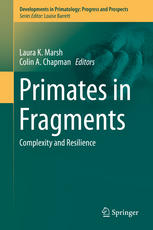

Most ebook files are in PDF format, so you can easily read them using various software such as Foxit Reader or directly on the Google Chrome browser.
Some ebook files are released by publishers in other formats such as .awz, .mobi, .epub, .fb2, etc. You may need to install specific software to read these formats on mobile/PC, such as Calibre.
Please read the tutorial at this link: https://ebookbell.com/faq
We offer FREE conversion to the popular formats you request; however, this may take some time. Therefore, right after payment, please email us, and we will try to provide the service as quickly as possible.
For some exceptional file formats or broken links (if any), please refrain from opening any disputes. Instead, email us first, and we will try to assist within a maximum of 6 hours.
EbookBell Team

0.0
0 reviewsThis book is number two in a series for Primates in Fragments. In this volume, ten years after the first http://www.springer.com/social+sciences/anthropology+%26+archaeology/book/978-0-306-47696-9, we continue to address issues regarding primates within a fractured landscape. There are seven sections based on specific categories of primates in fragments. In the Introductory section, authors discuss the issues surrounding primates in remnant habitats as well as encourage discussion about what we mean by fragmentation on a landscape scale. In the Long-Term and Regional Studies section, authors present information on changes that have occurred during longer studies as well as changes that have occurred over regions. In the Landscape, Metapopulations and the Matrix section, authors cover topics from dry to moist forests, and from metapopulations to single species use of multiple fragments locations. In Feeding and Behavioral Ecology, authors take a closer look at the flexibility and responsiveness of primates in fragments in terms of their food choices, resource use, and behavioral changes. In Endemic, Endangered, and Nocturnal Primates authors uncover details involving critical primates living in major city centers to the heights of the Himalayas. In Genetics, Disease and Parasites authors cover topics including population viability, disease and parasite transmission between primates in fragments and humans. Finally, in the Conservation and Ecology: Threats and Management section, we synthesize information in this volume and make recommendations for the future of work in this field and the survivability of primates in fragments.